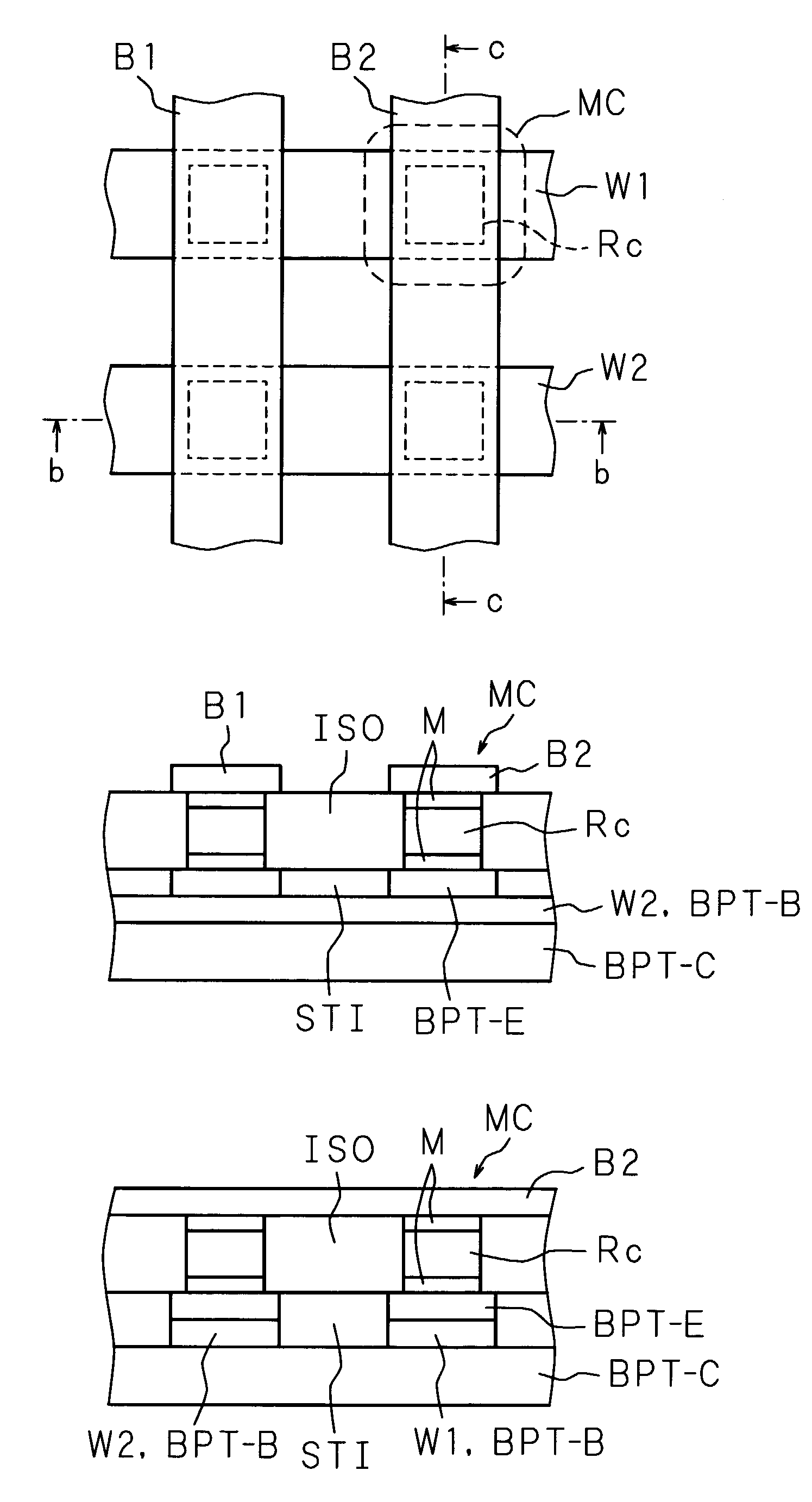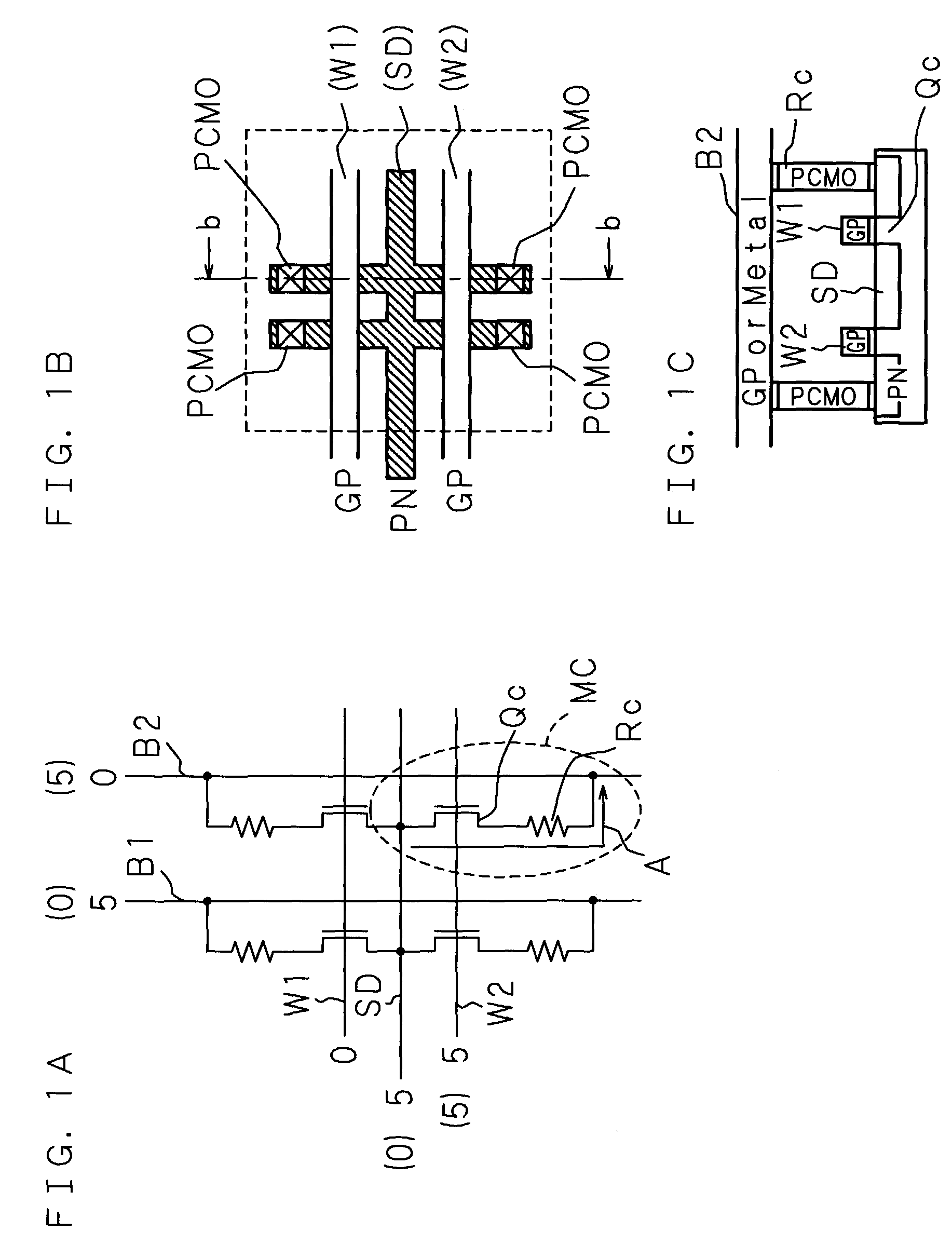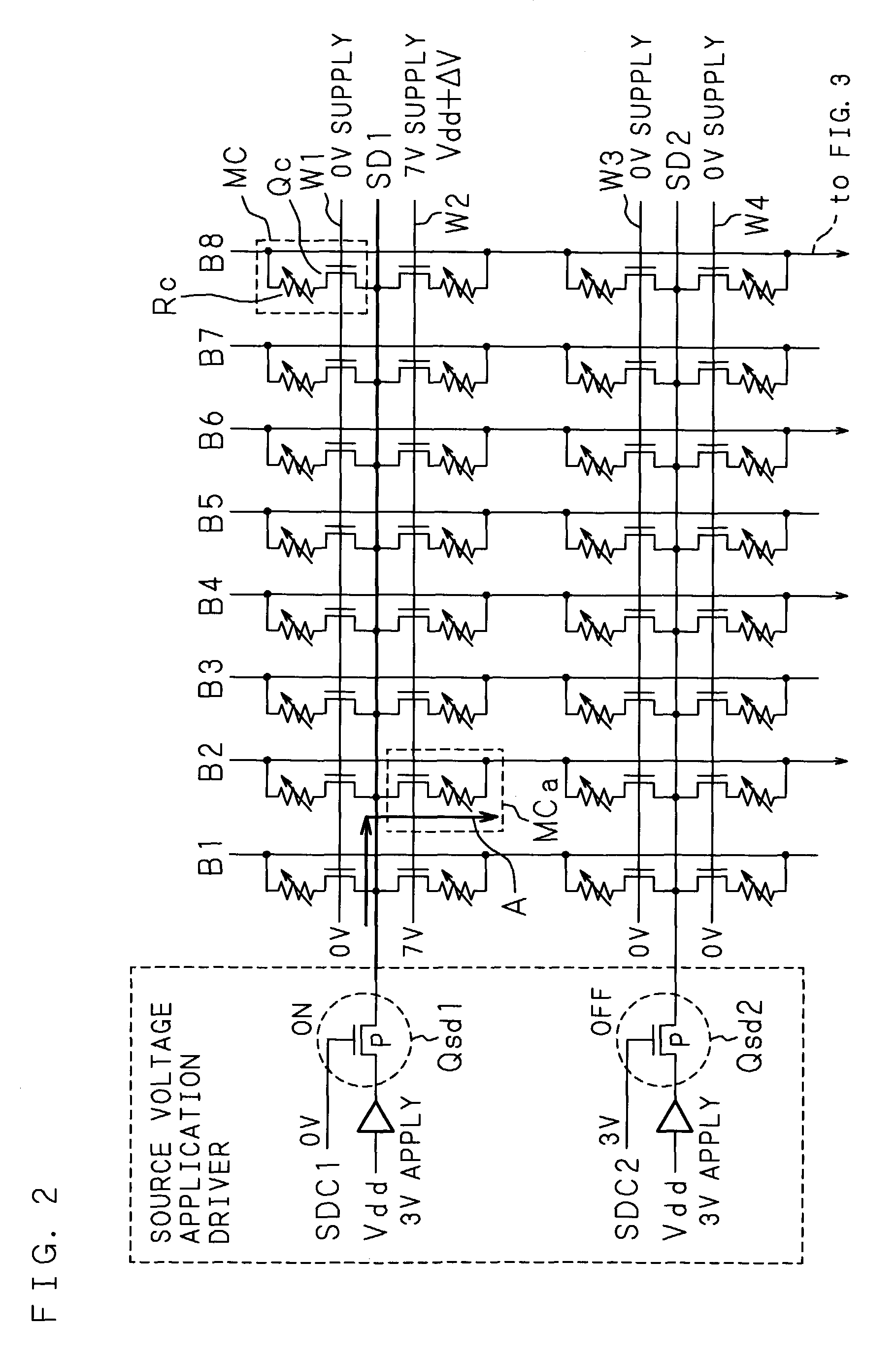Memory cell with a perovskite structure varistor
a memory cell and varistor technology, applied in semiconductor devices, digital storage, instruments, etc., can solve the problems of inability to evaluate the current value at the time of the read operation, and inability to raise the degree of integration of the array serving as a memory device. achieve the effect of high integration
- Summary
- Abstract
- Description
- Claims
- Application Information
AI Technical Summary
Benefits of technology
Problems solved by technology
Method used
Image
Examples
embodiment 1
[Embodiment 1]
[0069]FIGS. 1A to 1C are explanatory views showing the configuration of a memory device (memory cells and a memory array) in accordance with the present invention. FIG. 1A is a circuit diagram of the memory array in accordance with the present invention. FIG. 1B is a schematic plan view showing the layout pattern of FIG. 1A. FIG. 1C is a schematic sectional view taken on arrow bb of FIG. 1B. In FIG. 1C, oblique lines indicating a sectional plane are omitted (this omission is also applicable to other sectional views).
[0070]MC designates a memory cell (hereafter also referred to as a cell). MC is formed of a combination of a current controlling device Qc and a variable resistor Rc. A field-effect transistor (FET, hereafter also referred to as a Tr) is used as the current controlling device Qc (hereafter, the current controlling device Qc formed of a field-effect transistor is also referred to as a Tr Qc). The Tr Qc is connected in series with the current path of the vari...
embodiment 2
[Embodiment 2]
[0116]In a memory cell in accordance with Embodiment 2, a variable resistor having a resistance body made of a thin-film material PCMO or the like is used as a memory element, and a PN junction diode (hereafter referred to as a diode) is used instead of the FET in accordance with Embodiment 1. FIGS. 21A to 21C are views illustrating the configuration of a memory device (memory array) in accordance with the present invention. FIG. 21A is a schematic plan view (circuit diagram) showing a memory array in accordance with the present invention. FIG. 21B is a schematic sectional view taken on arrow bb of FIG. 21A. FIG. 21C is a schematic sectional view taken on arrow cc of FIG. 21A. The memory cell (and a memory array) is formed by using of a variable resistor as a memory element. The variable resistor has a resistance body made of a thin-film CMR material (for example, PCMO).
[0117]By forming memory cells, each comprising a diode and a variable resistor, at the intersections...
embodiment 3
[Embodiment 3]
[0135]In Embodiment 1, a case wherein an FET is used as a current controlling device is shown, and in Embodiment 2, a case wherein a diode is used as a current controlling device is shown. In Embodiment 3, a case wherein a bipolar transistor (hereafter also referred to as a BPT) is used instead of an FET as a current controlling device is shown.
[0136]FIG. 35 is a view illustrating the configuration of a memory array in accordance with the present invention. The figure shows a state wherein memory cells MC are arranged in a 2 by 2 matrix to form a memory array. The memory cell MC is formed of a combination of a current controlling device Qc and a variable resistor Rc. The current controlling device Qc is formed of a BPT (hereafter, the current controlling device Qc formed of a BPT is also referred to as a BPT Qc). The BPT Qc is connected in series with the current path of the variable resistor Rc so as to control a current flowing through the variable resistor Rc. Since...
PUM
 Login to View More
Login to View More Abstract
Description
Claims
Application Information
 Login to View More
Login to View More - R&D
- Intellectual Property
- Life Sciences
- Materials
- Tech Scout
- Unparalleled Data Quality
- Higher Quality Content
- 60% Fewer Hallucinations
Browse by: Latest US Patents, China's latest patents, Technical Efficacy Thesaurus, Application Domain, Technology Topic, Popular Technical Reports.
© 2025 PatSnap. All rights reserved.Legal|Privacy policy|Modern Slavery Act Transparency Statement|Sitemap|About US| Contact US: help@patsnap.com



